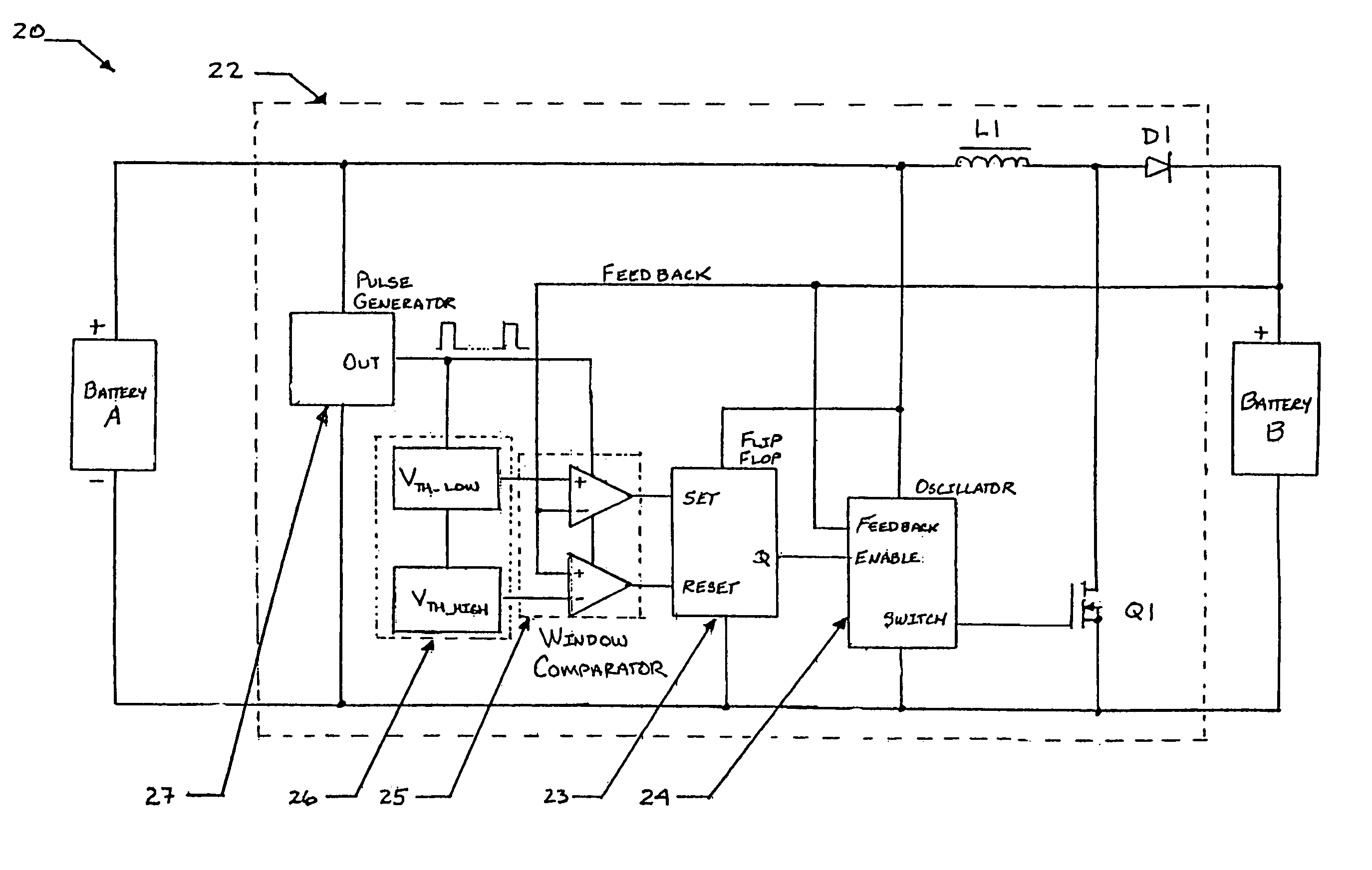Hybrid battery power source for implantable medical use
a hybrid battery and medical device technology, applied in primary cell maintenance/service, non-aqueous electrolyte cells, therapy, etc., can solve the problems of significant voltage delay, and li/svo cell resistance increase unpredictable, etc., to optimize the output, and improve the efficiency of the cell
- Summary
- Abstract
- Description
- Claims
- Application Information
AI Technical Summary
Benefits of technology
Problems solved by technology
Method used
Image
Examples
Embodiment Construction
Introduction
[0032]Exemplary hybrid battery power sources for use with implantable defibrillators, ICDs and other high energy battery powered medical devices will now be described, together with an exemplary defibrillator that incorporates a hybrid battery power source therein. As indicated by way of summary above, the power source embodiments disclosed herein are characterized by having primary and secondary batteries. The primary battery has high energy density but typically will also have internal resistance that is relatively high, or which can increase significantly during discharge. Examples of this primary battery include the lithium-carbon monofluoride (Li / CFx) battery, the lithium-bromine chloride (Li / BrCl2) battery, the lithium sulfuryl chloride (Li / SO2Cl2) battery, the lithium thionyl chloride (Li / SOCl2) battery, the lithium-manganese dioxide battery (Li / MnO2), and the lithium-silver vanadium oxide (Li / SVO) battery. The secondary battery is rechargeable and has low interna...
PUM
| Property | Measurement | Unit |
|---|---|---|
| volumetric energy density | aaaaa | aaaaa |
| pressure | aaaaa | aaaaa |
| open circuit voltage | aaaaa | aaaaa |
Abstract
Description
Claims
Application Information
 Login to View More
Login to View More - R&D
- Intellectual Property
- Life Sciences
- Materials
- Tech Scout
- Unparalleled Data Quality
- Higher Quality Content
- 60% Fewer Hallucinations
Browse by: Latest US Patents, China's latest patents, Technical Efficacy Thesaurus, Application Domain, Technology Topic, Popular Technical Reports.
© 2025 PatSnap. All rights reserved.Legal|Privacy policy|Modern Slavery Act Transparency Statement|Sitemap|About US| Contact US: help@patsnap.com



